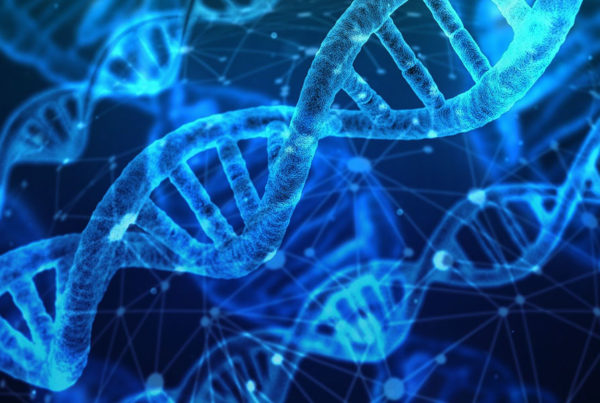Next-generation sequencing (NGS) often involves pooling hundreds of samples in a single run. Each sample’s DNA gets assigned a unique adapter or index primer so reads can be identified and assign to the respective sample after the sequencing. This so called multiplexed sequencing, however, can be quite sensitive. Especially cross-contaminations in low-quality adapters or primers might lead to misassigned reads, noisy data, or even failed runs.
Examples:
- Adapter from sample A is contaminated with 0.1% of sample B adapter. A fraction of sample A reads could be incorrectly tagged to sample B after sequencing.
- Impure oligos can also interfere with library preparation by forming adapter dimers, or bind inefficiently on the flow cell, ultimately reducing sequencing yield.
Oligos are pivotal to NGS, after all, and the quality of the oligos directly impacts the quality of the sequencing results.
Eurofins Genomics’ NGSgrade Oligos 2.0 were developed to tackle this “high purity” challenge. These oligos sets have certified cross-contamination rates as low as 0.01–0.05%. In practice, that means virtually no oligos from other syntheses present to cause sample mix ups.
We are using a high-fidelity synthesis process that does not require HPLC purification to produce ultra-pure and full-length sequences at scale. Our NGSgrade Oligos 2.0 are validated rigorously in real NGS workflows.
Why high oligo purity matters for NGS
Truncated oligos
High oligo purity is the presence of the correct, full-length oligos without significant amounts of sequence truncation or unintended oligos. However, conventional oligo synthesis methods often produce a significant fraction of shorter, incomplete sequences as by-products. These truncated oligos can ligate inefficiently, leading to incomplete libraries or off-target amplification.
Example:
A truncated adapter might attach to a DNA fragment but fail to provide a priming site for sequencing, resulting in a lost fragment. These truncated adapter by-products effectively reduce the concentration of functional adapter in the sequencing reaction, and could lead to reduced yield and coverage.
Nonspecific annealing of truncated oligos could also increase sequencing noise.
Cross-contamination during production
Cross-contamination between different oligos synthesized in the same facility is another potential concern. Even minimal cross-contamination (on the order of 0.1%) in indexed adapters can cause reads to be misassigned to the wrong sample.
Example:
During multiplexed sequencing of a tumor sample and a healthy sample, adapter cross-contamination could lead to the detection of a low-frequency “mutation” in the healthy sample that actually originated from the tumor DNA’s reads. Especially in sensitive applications such as rare variant detection or microbiome profiling, false signals like these are unacceptable, making high purity and contamination-free oligos a must have for credible NGS data.
Manufacturing quality
A commonly used purification method for oligos is high-performance liquid chromatography (HPLC). While HPLC does enrich full-length oligos, it cannot completely eliminate cross-contamination in long oligos.
The new Eurofins Genomics synthesis pipeline for NGSgrade oligos achieves extremely high coupling efficiencies and produces full-length oligos beyond what older methods could attain, without needing HPLC post-cleanup.
Each NGSgrade oligo batch is quality-checked by OD and mass spectrometry to ensure every oligo meets strict specifications before it reaches our customers.
Impact of high oligo purity on library preparation and adapter ligation
During library preparation, adapters with index sequences are ligated to DNA fragments to enable sequencing. The success of the ligation step highly depends on the adapter purity and concentration. Impure adapters can lead to adapter dimer formation (ligation of adapter fragments to each other instead of DNA). Adapter dimers amplify and consume sequencing reads, manifesting as an undesirable peak of very short fragments and reducing effective library yield.
By using highly pure NGSgrade adapters, the chance of adapter dimer formation is reduced, as all adapter molecules are full-length and carry the required sequences to ligate only where intended.
Read more in our Oligo Application Note.
Impact of high oligo purity on PCR amplification step
After adapter ligation, many NGS workflows include a PCR amplification step to enrich for fragments that have adapters on both ends and to increase library quantity. Here, primer quality is again paramount. Truncated or incorrect primers might still anneal partially to the template DNA and produce misprimed or truncated PCR amplicons that introduce noise.
By eliminating truncated primer species, NGSgrade oligos lead to higher final library yields and more even coverage.
NGSgrade 2.0: Ultra-pure oligos for high-throughput sequencing
Key features and benefits of NGSgrade 2.0 include:
- Market-leading purity and cross-contamination control
Each oligo batch is produced with a typical cross-contamination rate of just 0.01–0.05%, far below the ~0.1–0.25% cross-talk tolerated by older methods. - No HPLC purification needed
Instead of relying on HPLC to purify synthesis errors, NGSgrade oligos 2.0 production is based on a synthesis process that creates near full-length oligos (up to 120 bases) with minimal truncation. - Strict quality control and validation
Every NGSgrade oligos 2.0 is quality-checked by OD measurement and mass spectrometry to confirm it’s the right length and composition. - Certified production
The production is carried out under stringent quality standards (ISO 13485 for medical-grade manufacturing) to ensure consistency. - Synthesis at scale
NGSgrade oligos 2.0 can be ordered in scales from 4 nmol up to 25 nmol or more. - Delivery formats
In tubes or plates, dried or in buffer.
When to choose Unique Dual Indices over NGSgrade oligos 2.0
For applications that require more indexing precision, such as experiments involving very high multiplexing or highly sensitive variant detection, the best practice is to use Unique Dual Indices (UDIs) for library preparation. UDIs are specialized index pairs that are guaranteed unique to each sample and can virtually eliminate any index misassignment due to index hopping.
NGSgrade oligos ensure top-notch performance in all the fundamental steps of NGS, while UDIs are the go-to solution when researchers need to absolutely safeguard against sample mix-ups in multiplexed sequencing.
Did you like this article? Then subscribe to our Newsletter and we will keep you informed about our next blog posts. Subscribe to the Eurofins Genomics Newsletter.







